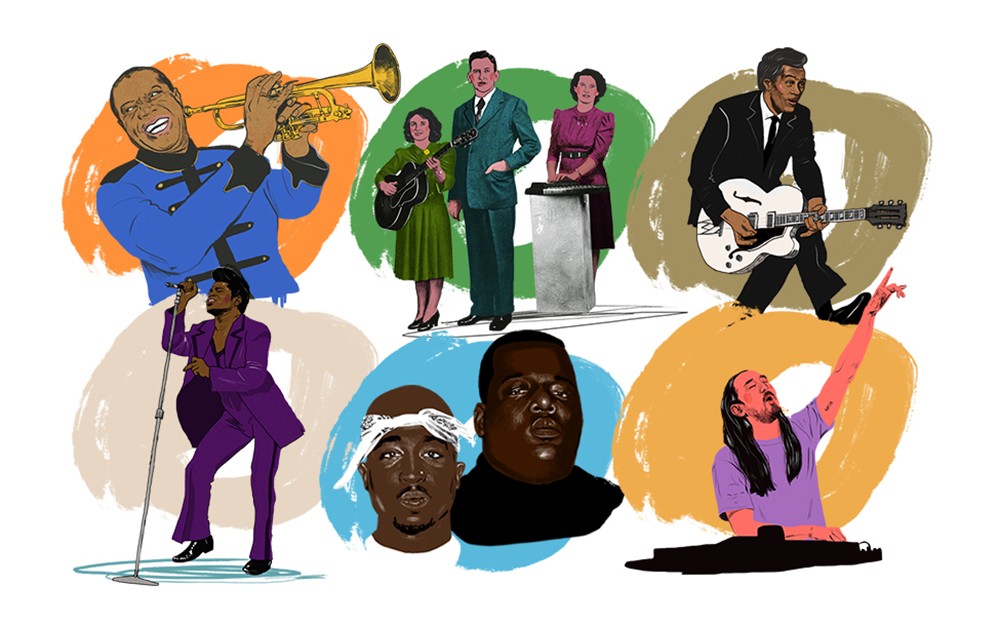Thanks to the activities of immigrants in con. 18th century received active development and prof. forms of music life. As a political and the cultural center moved forward Philadelphia; here the leading role was played by A. Reinagle (songwriter, theater music, pianist and music teacher), the Carr family (B. Kapp is the most famous), R. Taylor, and also J. Lyon (published a collection of religious hymns “Urania” , 1762). In 1820 it was the main Society of Music fund, which organized and subsidized conc. life and music. institutions. J. Hewitt, I. X. Möller, and V. Pelissier (opera Edwin and Angelica, staged in 1796) played an important role in the musical life of New York. life of Boston – organist J.K. Jackson and I.K.G. Graupner, organizer of music.

Society of Handel and Haydn (1815), the choir performed ch. arr. op. these composers. Graupner, author of the symphony. op. (he is considered the “father of Amer. orc. music”), he also created an orchestra for the performance of symphonies. op. Haydn; from this team at the beginning. 19th century Philharmonic was formed. about-in, the orchestra to-rogo became the basis of the Boston Symphony Orchestra. Peculiar music. geographic traditions. position and special diversity of ethnic. composition of the population is different New Orleans. In con. 18th century Here the French became widespread. opera (in 1796, the post. Sylvain by A. Grétry, and then operas by other composers), from 1810 a permanent opera troupe began to perform.
Since the 1820s in the country began a general passion for Italian. opera; the first touring performed ital.
Spanish repertoire. troupe of M. P. Garcia; she also performed in New York, Philadelphia, Chicago, San Francisco. Following New Orleans, the first permanent opera houses appeared in these cities; Operas by G. Rossini, V. Bellini, G. Donizetti, and others were performed. ital. opera companies; among their soloists are J. Montresor (tenor), G. Sontag (soprano). The popularity of the Italian opera contributed to the appeal to the operatic genre of Amer. composers. Among the first Amer. operas – “Leonora” and “Notre Dame Cathedral” by W. G. Fry (posted in Philadelphia in 1845 and 1864) and “Rip van Winkle” by J. Bristow (after W. Irving, posted in New York in 1855) .
In 1820-40, two most important trends were especially clearly identified, which became decisive in the subsequent development of US music: one of them is associated with the desire to cultivate Amer. soil decomp. types and forms of music. culture (including composing and performing) and music. European life. type, the other – with the emergence of a purely Amer. forms, ch. arr. household, born spontaneously and have become characteristic of decomp. regional, ethnic, social and religious. population groups. The interplay between these trends has resulted in a wide variety of types, genres and styles of US music. The first trend was expressed in the cultivation of religions. hymns prof. type (in contrast to the amateur nature of the work of representatives of the New English school), the spread of sentimental ballads of Anglo-Amer. traditions, the development of forms of conc. life (regular performances by pianists, choirs, orchestras); in the 1830s and 40s collections of the most popular hymns appeared (“The Boston academy collection of choruses”, 1836; “The Sacred lyre”, 1840, etc.). Their authors and compilers were T. Hastings, L. Mason, T. Webb and others.
Sentimental ballads (the so-called noble melodies – genteel airs) became the most democratic. and a widespread form of “grafted” (cultivated) art-va; among their authors are X. Russell (performed his own ballads), J. X. Hewitt, W. B. Bradbury, C. Horn, S. Lanier (also a poet). In imitation of fashion in the middle. 19th century European traditions of “singing families” appeared “singing” Amer. families (eg, the Hutchinsons, etc.).
It has become widespread characteristic of Europe. conc. life ser. 19th century fp tradition.
virtuoso performance; concerts of guest performers – famous European. pianists, which became more and more frequent, aroused much more interest than the performances of orchestras or the choir. teams. Music for fp. wrote most of the Amer. composers ser. 19th century, both well-known (R. Hoffmann, W. Mason, and others) and minor (for example, C. Groub, several hundreds of fp. op., which nevertheless were published).

The composer and concert virtuoso pianist L. M. Gottschalk (Gottschok; a native of New Orleans) stood out. He studied in Paris, where F. Chopin and G. Berlioz, who listened to his game, highly appreciated the 14-year-old concert player; toured a lot in Europe and America; fp author. exotic plays. character (“Banjo”, “Souvenir from Puerto Rico”) and sentimental ballads (“The Dying Poet”, etc.), as well as operas and symphonies. cit., in which they reflected specific. features of Creole and Afro-Caribbean music. Many arose. firms for the production of keyboard instruments, including J. Chickering, W. Knabe, and the especially popular G. Stenway (in 1829, about 2,500 instruments were produced in the USA a year, in 1860 – more than 21 thousand .), which was largely due to the growing interest in the FP. music.
